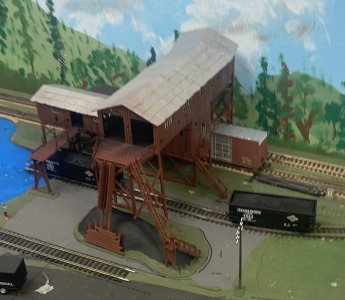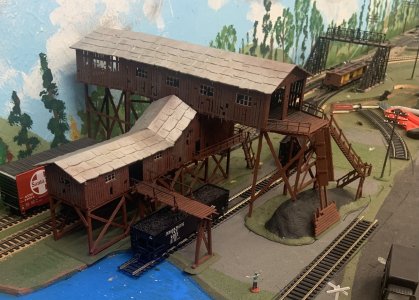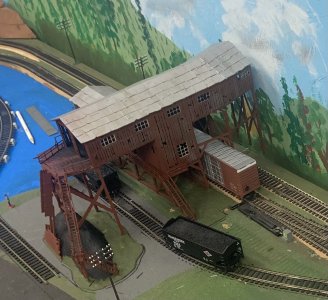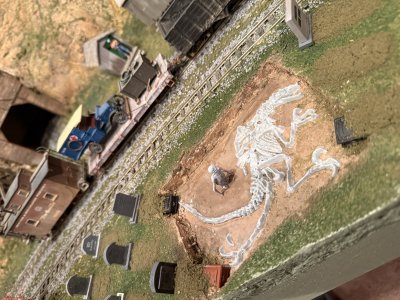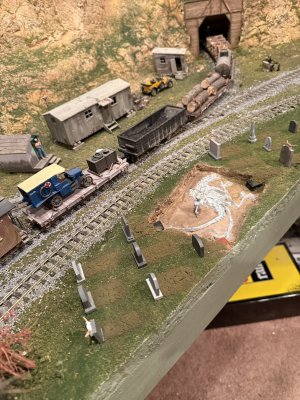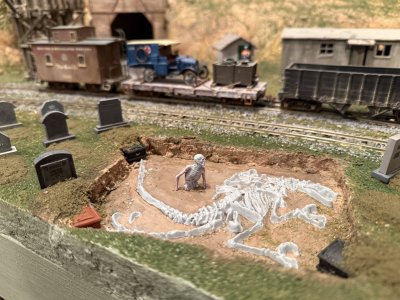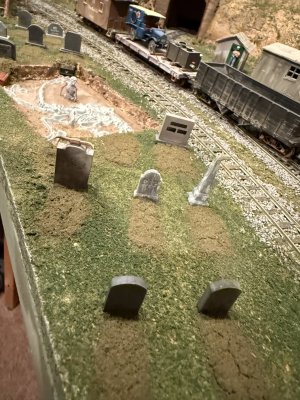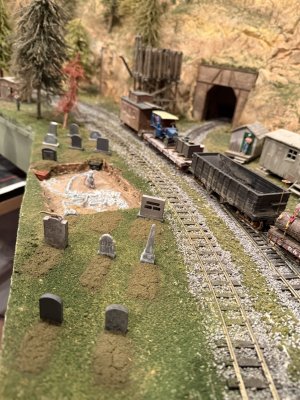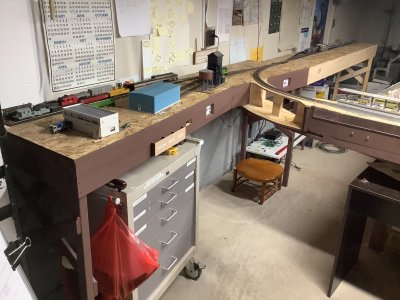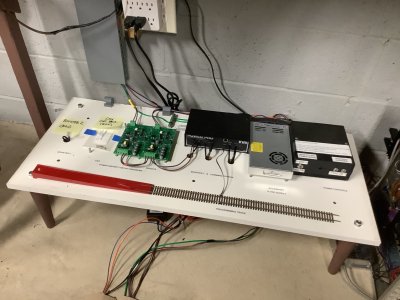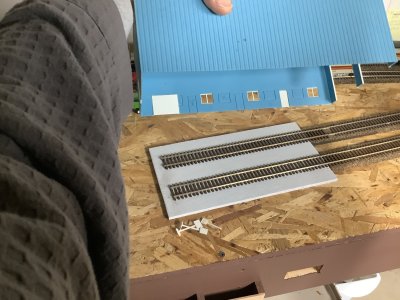It actually varies from structure to structure, but the basics are the same. I mix a batch of paint and water, 1 drop paint, 2-3 drops rubbing alcohol and 20 drops of water and then brush it on while the surface is flat on the workbench. The alcohol helps break the surface tension. After the mixture runs into the recesses, I dab some but not all with a paper towel to remove the paint mixture from the surface only. Occasionally I will apply dull coat the the wall first, and add a bit more of the 91% isopropyl alcohol to the paint mixture. This causes cloudiness on the brick surface which looks more aged. As far as the paint color, it also varies. For a newer building, I use mostly white with a bit of gray mixed in. Sometimes I use Polly S concrete color, but other paint manufacturers have a concrete color close to it. Sometimes I mix all three colors, or just a mix of two. Depends on how I want the structure to eventually look.
Some kits are easier than others; older kits tend to have deeper recesses between the bricks which makes it easier. Walther's kits are the hardest for me as they barely make an indentation. Paint/water proportions can vary if I think that the mixture is too thick or thin. I use old Testor's Liquid Cement bottles to mix the paint in, and I make extra which can be sealed for later use. Yank the brush out of the top, leaving the liner in place to form a tight seal. I use a very soft 1/2" paintbrush to apply the mortar.


